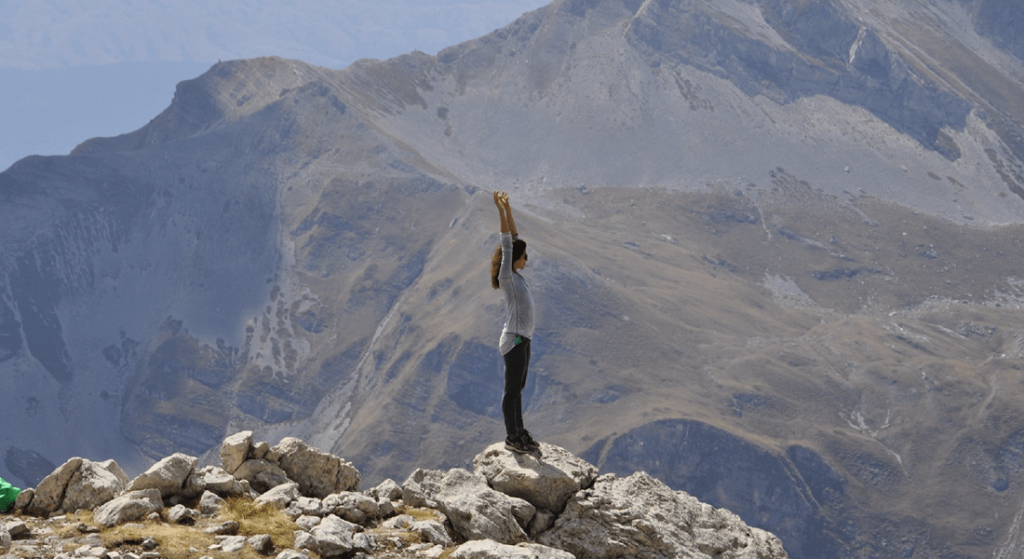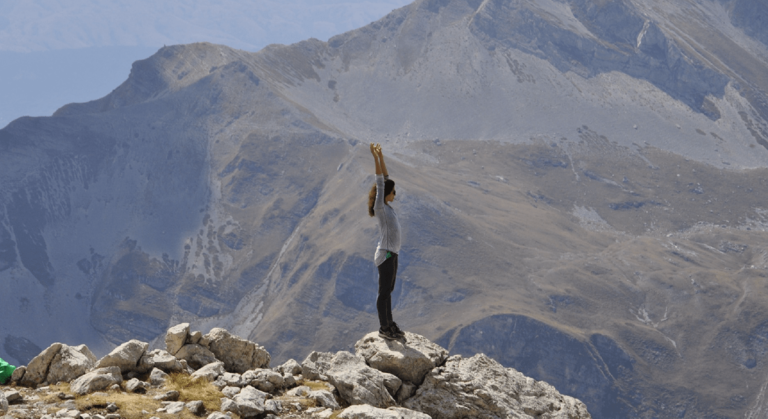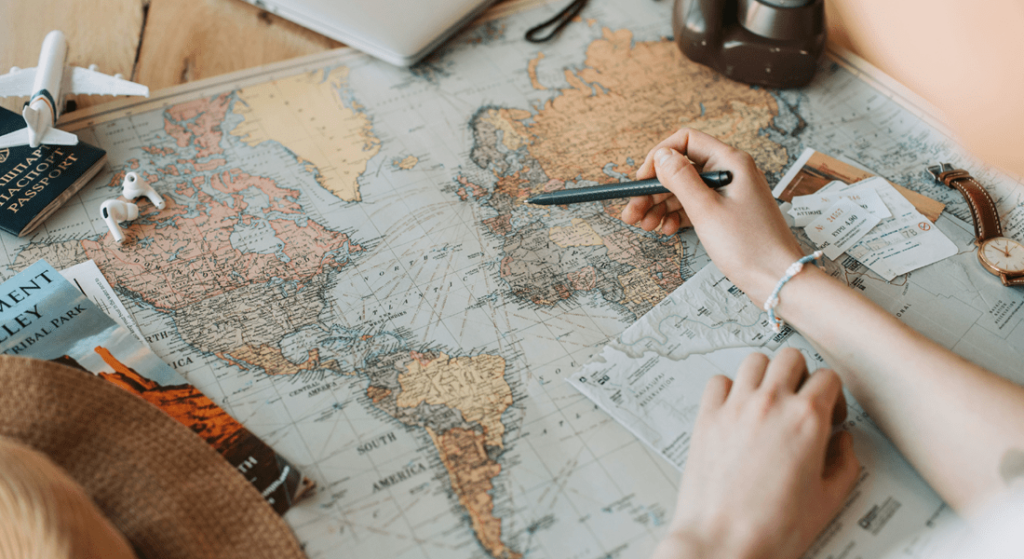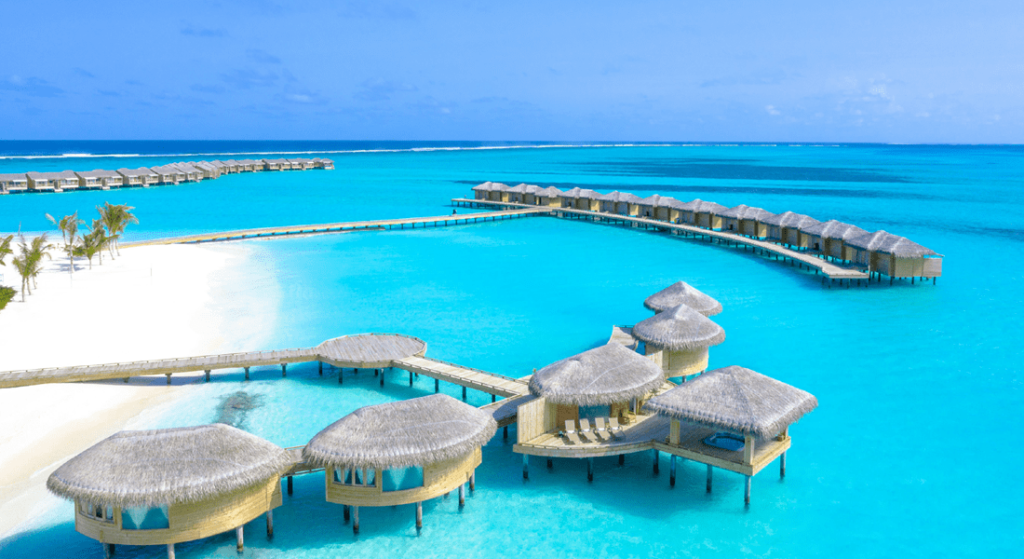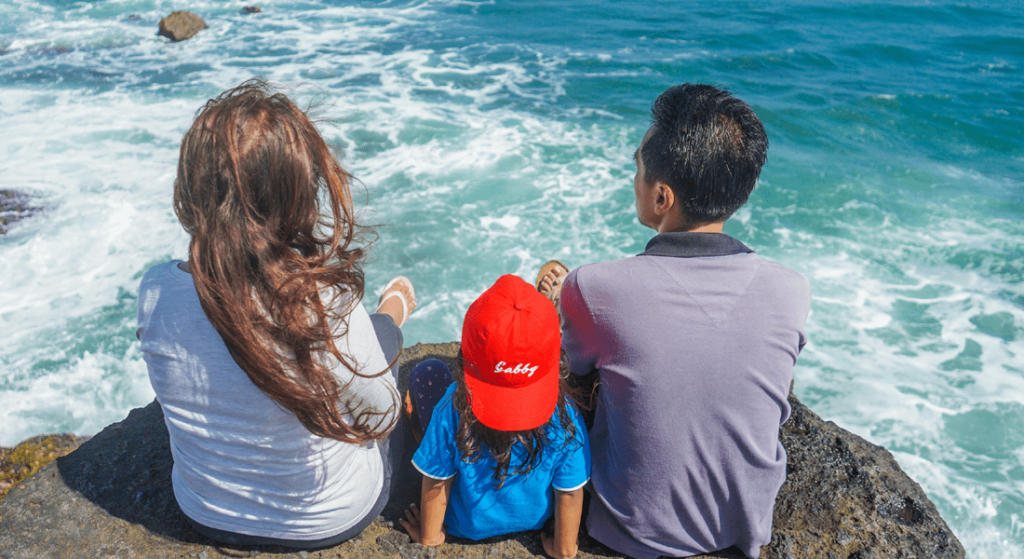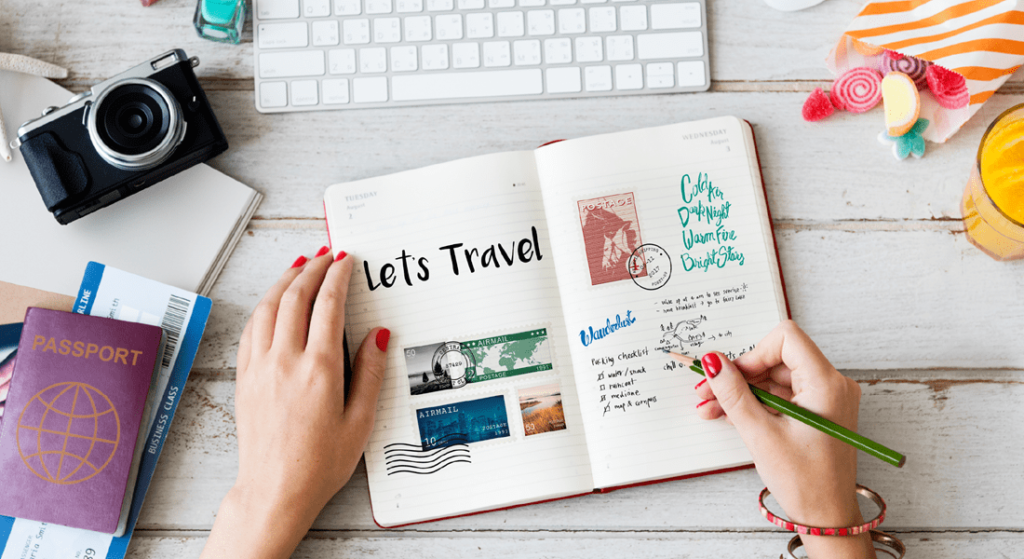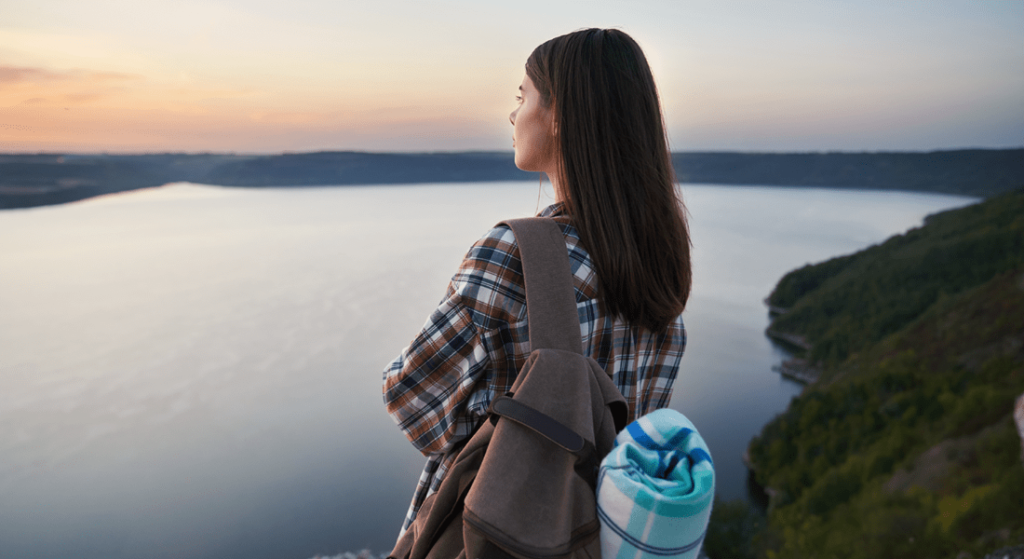Are you planning to Alaska solo travel?
Alaska beckons with its unparalleled beauty and the freedom it offers to solo travelers like yourself. Its vast landscapes hold endless possibilities, allowing you to explore at your own pace and curate a personalized journey. Solo travel in Alaska encompasses physical topography, personal growth, and self-discovery.
By taking necessary precautions and seeking local insights, you can embark on a transformative experience while ensuring safety.
So, why wait?
Why travel solo to Alaska?
1. Exploration at your own pace
When you embark on a solo journey through Alaska, the breathtaking freedom to explore at your pace awaits you.
Whether it entails hiking through majestic landscapes, gliding across serene waters in a kayak, or simply relishing the untouched wilderness, Alaska provides an unparalleled sense of liberation and adaptability.
Dive into this immersive experience and relish every moment without any restrictions or compromises impeding your path.
2. Flexibility in planning
By traveling solo in this magnificent destination, you unlock the freedom to personalize your journey based on your unique interests and desires.
You can choose where to venture, where to embark, and how long you want to stay—no need for compromise or waiting around for others. The options are boundless, enabling you to craft a truly tailored trip.
3. Personal growth and discovery
Are you ready for an incredible opportunity for personal growth and self-discovery?
Embrace the spirit of adventure as you embark on a solo journey in Alaska. Navigate its magnificent wilderness, face challenges head-on, and witness your transformation. Pushing boundaries will unveil hidden strengths within you.
Alaska’s solitude will empower you, fostering a deep connection with yourself and boosting your confidence.
Prepare for breathtaking beauty and endless possibilities to grow, regardless of whether you are an experienced solo traveler or venturing into this realm for the first time.
Female Solo Travel Alaska

Alaska is safe for solo female travelers, providing an exceptional and empowering adventure amidst its untamed wilderness.
However, exercising caution and maintaining awareness of your surroundings remains crucial.
1. Research and plan your itinerary
Before your trip, it is essential to research the local areas and customs thoroughly. This will enable you to make well-informed decisions and minimize potential risks.
2. Pack wisely
Remember to pack the necessary clothing and gear to ensure a safe and enjoyable adventure in Alaska’s unpredictable weather and wildlife encounters.
This should include hiking boots, warm layers, rain gear, and bear spray.
3. Share your itinerary
Share your itinerary and activities with a trusted person back home to ensure your safety. It is important to keep them updated on your well-being throughout your trip.
4. Trust your instincts
Trust your instincts and prioritize your safety as a solo traveler.
If you sense something is amiss, act on it and remove yourself from the situation. Seek assistance if necessary, erring on the side of caution.
5. Stay connected
Ensure uninterrupted connectivity during your travels with the convenience of a local SIM card or portable Wi-Fi.
This allows you to navigate, access information, and prioritize your security easily.
6. Respect local customs and traditions
To enhance your travel experience in Alaska and gain a deeper appreciation for its diverse cultures, it is important to respectfully honor the traditions of the indigenous people.
7. Connect with other travelers
Looking to meet fellow travelers and create a sense of camaraderie while ensuring your safety?
Join group tours or activities during your solo travel in Alaska. It’s a great way to make new friends and embrace exploration.
To connect with other solo female travelers, consider engaging with online communities and forums for valuable tips and advice.
Remember, prioritizing safety and staying aware can make your journey empowering.
How to stay safe as a solo traveler to Alaska
When planning a solo trip to Alaska, you must prioritize your safety and implement necessary precautions for a smooth and secure journey.
To ensure your safety as a solo traveler in Alaska, follow these valuable tips:
1. Be prepared for the weather
When preparing for the unpredictable weather in Alaska, it’s essential to pack suitable clothing and gear.
Make sure you layer your outfit to stay comfortable and protected.
Don’t forget to bring a sturdy rain jacket, warm layers, and waterproof boots for ultimate comfort and protection throughout your journey.
2. Stay informed about wildlife
When visiting Alaska, it’s essential to familiarize yourself with wildlife safety guidelines.
Make sure to carry bear spray and remain mindful of your surroundings at all times. This will help prevent surprising encounters with wildlife.
3. Plan your itinerary wisely
To make your trip go smoothly, follow these steps:
1. Plan your itinerary.
2. Research any potential risks.
3. Don’t forget to share your travel plans with someone back
4. Stay connected
Ensure your connectivity with a local SIM card or portable Wi-Fi to access emergency services and receive important information when needed.
5. Trust your instincts
Trust your gut and make personal safety a priority when traveling alone.
If something doesn’t feel right, remove yourself and seek assistance. It’s always better to be cautious than to take unnecessary risks.
6. Be cautious with alcohol consumption
Ensure responsible and moderate alcohol consumption to prioritize your well-being.
Overindulgence can cloud your judgment and leave you exposed to potential risks. Stay vigilant of your surroundings, always maintaining control over your actions.
7. Stay in touch with local authorities
To ensure your safety in emergency situations, it is important to become familiar with the necessary contacts and know how to reach local authorities.
Keep essential phone numbers, such as those for the local police, fire department, and medical services, are easily accessible in case any unforeseen emergencies arise.
To ensure a safe and enjoyable solo trip to Alaska, prioritize your safety and make smart decisions throughout your journey. By following these tips, you can guarantee a smooth expedition.
Recommended gear for Alaska solo travel
1. Sturdy backpack
When embarking on an adventure to explore Alaska’s expansive landscapes, a dependable backpack becomes a vital companion.
Seek out a backpack that boasts durability, ensuring it can withstand rugged terrains. Additionally, prioritize comfort by selecting one comfortable to wear for extended periods.
Opt for a backpack with multiple compartments to organize and access your gear as needed efficiently.
2. Hiking boots
When exploring Alaska’s rugged and uneven terrain, investing in a pair of durable hiking boots that offer ankle support and excellent traction is essential. These features are crucial for safely navigating the trails.
3. Warm layers
Alaska’s weather is known for its unpredictability, with temperatures changing frequently throughout the day.
It’s best to pack a range of warm layers to stay comfortable in these varying conditions. This includes thermal base layers, fleece or down jackets, and waterproof outer shells.
4. Rain gear
When visiting Alaska, it’s essential to be prepared for rainy weather. Pack a waterproof jacket and pants to keep yourself dry during wet conditions.
Look for gear that is breathable and light for added comfort.
5. Bear spray
For your safety and to prevent bear encounters, it is important to carry bear spray at all times when exploring Alaska’s wilderness.
6. Navigation tools
When exploring Alaska’s landscapes, it is important to prepare with navigation tools such as a map, compass, or GPS.
Take the time to familiarize yourself with the area beforehand and always have a backup plan in case of unexpected changes.
7. First aid kit
While traveling solo, it’s important to be prepared for any accidents.
Make sure to bring a well-stocked first aid kit that includes essentials like bandages, antiseptic wipes, pain relievers, and any necessary medications. Preparing for minor injuries or ailments will provide peace of mind during your trip.
8. Portable water filter
In certain parts of Alaska, access to clean drinking water may be restricted.
To ensure a safe and dependable supply of drinking water during your explorations, it is advisable to bring along a portable water filter or purification tablets.
9. Headlamp
A headlamp is a must-have tool for solo travelers, offering hands-free lighting essential for navigating in low light or during nighttime activities.
Don’t forget to pack spare batteries to ensure uninterrupted illumination.
10. Portable charger
For a memorable trip in Alaska’s wilderness, it’s important to prioritize safety and stay connected.
Investing in a portable charger is a great idea to ensure your devices are always charged, particularly if you rely on your phone for navigation or emergencies.
Additionally, tailor your gear choices based on the activities you plan to engage in during your trip.
Alaska Wildlife awareness and interaction guidelines
Respect and be aware of Alaska’s wildlife when exploring the wilderness.
Follow these guidelines to ensure a safe and responsible interaction with the animals:
1. Maintain a safe distance
It’s crucial to keep a safe distance from wildlife at all times. Approaching too closely can disturb or agitate the animals, leading to potentially dangerous situations. Respect their space and observe them from a distance using binoculars or a zoom lens.
2. Avoid feeding or touching animals
Never feed wildlife or attempt to touch them. This can disrupt their natural behavior and create dependence on human interaction. It can also harm both you and the animal, as they may become aggressive in their quest for food.
3. Store food and trash properly
Properly store food and trash when camping to prevent wildlife access. Use bear-resistant containers or hang food high in trees. Dispose of trash in designated bins to avoid attracting wildlife.
4. Be cautious during wildlife encounters
If you encounter wildlife during your adventures, remain calm and avoid sudden movements. Back away slowly, giving the animal enough space to retreat. Do not run or turn your back on them; this may trigger a chase response.
5. Give wildlife the right of way
Be aware of wildlife trails or signs of recent animal activity when hiking or exploring. If you encounter animals on the trail, give them the right of way and detour around them. This ensures their safety and minimizes any potential conflicts.
6. Learn about animal behavior
Educate yourself about wildlife behavior to anticipate their actions and ensure safety for both you and the animals.
7. Travel in groups when possible
Traveling in a group is advisable in areas with a higher likelihood of wildlife encounters for safety and to deter potential conflicts.
8. Observe wildlife from a vehicle
When observing wildlife in areas like national parks or reserves, stay in your vehicle to ensure safety and minimize animal disturbance. Prioritize the safety and well-being of yourself and the animals to have a responsible and memorable wildlife experience in Alaska.
Emergency contacts and apps for solo travelers in Alaska
Be prepared for emergencies on your solo trip to Alaska.
Here are some important emergency contacts and useful apps to have on hand:
Emergency Contacts
1. 911
In case of any life-threatening emergencies, dial 911 for immediate assistance. This is the general emergency number in the United States and can connect you to the appropriate local authorities.
2. Local Police
Research the emergency contact number for the local police department in the areas you plan to visit. Keep this number saved in your phone or written down in case you need to report any non-life-threatening incidents or seek assistance.
3. Fire Department
Find out the contact information for the local fire department, as they can assist in case of fires or other related emergencies. It’s always better to be prepared and have this information readily available.
4. Medical Services
Familiarize yourself with the contact details of nearby medical services, such as hospitals, clinics, or urgent care centers. In case of any medical emergencies or health concerns, you’ll know where to seek professional help.
Useful Apps
1. Alaska Safety App
The Alaska Safety App is specifically designed for travelers in Alaska. It provides essential safety information, emergency contacts, and real-time alerts about potential hazards, weather conditions, and wildlife sightings.
Download this app to stay informed and receive important updates during your trip.
2. Offline Maps
While exploring remote areas of Alaska, you may encounter limited or no internet connectivity. To navigate without relying on a data connection, download offline maps through apps like Google Maps or Maps.me. This way, you can still access maps and directions even when you’re offline.
3. SOS Emergency
The SOS Emergency app quickly sends distress signals and your GPS location to emergency contacts, ensuring a swift alert to family, friends, or authorities in case of emergencies.
4. Weather Apps
Stay updated on Alaska’s weather with reliable apps like Weather Underground, The Weather Channel, or AccuWeather. Get detailed forecasts, alerts, and radar maps to plan your activities accordingly.
5. Trail Apps
To enhance safety and be prepared for emergencies during your solo trip to Alaska, download trail apps like AllTrails or Gaia GPS.
These apps provide trail maps, descriptions, ratings, and reviews to help you choose routes. Also, have a backup power source like a portable charger for charged devices.
Stay informed, connected, and prioritize your well-being throughout your adventure.
Budgeting Hacks
Budgeting is crucial when planning a solo trip to Alaska.
Here are some budgeting hacks that can help you save money and make the most of your trip:
1. Cost-effective accommodation options
Consider affordable accommodation options in Alaska such as hostels, guesthouses, camping, vacation rentals, or shared accommodations to save money.
2. Budgeting food
Save money by cooking your meals with local ingredients. Shop at local markets and grocery stores for affordable and fresh produce. Pack snacks and sandwiches for day trips to avoid expensive restaurant meals.
3. Budgeting activities
To save money, prioritize free or low-cost activities like hiking, exploring museums with discounted/free admission, or attending local festivals/events.
Research online for special discounts/deals for attractions you plan to visit.
Transportation hacks
1. Local buses
Save money on transportation in Alaska by utilizing the reliable and affordable local bus systems. Check schedules and routes in advance to plan your itinerary efficiently.
2. Shared rides
Share rides with other travelers or locals to split transportation costs. Use apps like Uber, Lyft, or local rideshare groups to find shared rides and save money. Inquire about shared transportation options when booking tours for popular destinations.
3. Carpooling
Consider carpooling with other travelers or locals to explore remote areas of Alaska that may not be easily accessible by public transportation.
Look for online forums or social media groups to connect with potential carpooling partners and make your solo trip more affordable without compromising on the quality of your experience.
Plan ahead, do your research, and be mindful of your spending to stay within your budget.
Local Insights & Unique Opportunities
Discover hidden gems and gain a deeper understanding of Alaska’s culture and natural wonders by tapping into local knowledge.
Places Locals Love
While popular tourist spots in Alaska are undeniably breathtaking, it’s also worth seeking out the places that locals love. These hidden gems often offer a more authentic and less crowded experience.
Here are a few places that locals highly recommend
1. Talkeetna
This charming town is known for its stunning views of Denali, North America’s tallest peak. Locals love the laid-back atmosphere and the opportunity to explore the surrounding wilderness through hiking, fishing, and flightseeing.
2. Homer Spit
Located on the Kenai Peninsula, the Homer Spit is a narrow strip of land that extends into the Kachemak Bay. It’s a favorite among locals for its picturesque views, beachcombing, and the chance to spot marine wildlife like otters, seals, and seabirds.
3. McCarthy and Kennecott
Nestled in the heart of Wrangell-St. Elias National Park, these historic mining towns offer a glimpse into Alaska’s past. Locals love exploring the abandoned copper mines, hiking the surrounding trails, and soaking in the natural beauty of the area.
Best Times to Visit Popular Spots to Avoid Crowds
Plan strategically to avoid crowded tourist spots in Alaska and enjoy a peaceful experience.
Here are the best times to visit some popular spots
1. Denali National Park
To avoid the peak summer season crowds, consider visiting in late spring or early fall. The park is less crowded, and you’ll have a better chance of spotting wildlife like grizzly bears, moose, and caribou.
2. Kenai Fjords National Park
While summer is the most popular time to visit, consider going in the shoulder seasons of spring or fall. The weather is still pleasant, and you’ll have a better chance of booking boat tours to see the park’s glaciers and marine wildlife.
3. Glacier Bay National Park
The best time to visit this stunning park is during spring or fall shoulder seasons. The weather is generally milder, and you’ll have a better chance of securing a spot on one of the park’s limited-entry cruise ships.
Seasonal Events and Festivals Solo Travelers Shouldn’t Miss
Alaska offers vibrant seasonal events and festivals for solo travelers to immerse themselves in the local culture and community spirit.
Here are a few noteworthy events
1. Fur Rendezvous (Fur Rondy)
Held in Anchorage every February, this winter festival celebrates Alaska’s fur-trading heritage. Enjoy events like sled dog races, snow sculpture competitions, and the famous Running of the Reindeer.
2. Sitka Summer Music Festival
If you’re visiting Alaska in the summer, don’t miss the Sitka Summer Music Festival. Held in Sitka, this event features world-class musicians performing chamber music in stunning venues like Harrigan Centennial Hall and St. Michael’s Cathedral.
3. Alaska State Fair
Taking place in Palmer every August, the Alaska State Fair is a must-visit for solo travelers. Enjoy live music, carnival rides, agricultural exhibits, and indulge in delicious fair food.
Building Connections in your Alaska solo travel
Building connections and meeting new people can greatly enhance your solo travel experience in Alaska.
Here are some ways to connect with fellow travelers and locals:
Joining group tours for certain activities
Group tours are a great way to bond with like-minded individuals while exploring Alaska’s landscapes.
Choose reputable operators with small group sizes for a more intimate experience during activities like wildlife viewing, glacier hikes, or kayaking adventures.
Meeting locals and fellow travelers
Interact with friendly locals at cafes, restaurants, or events to learn about the area and gain insider tips. Stay in guesthouses or hostels to meet fellow travelers and exchange stories and recommendations.
Recommended apps and platforms to connect with fellow solo travelers or local guides
Several apps and platforms can help you connect with fellow solo travelers or local guides in Alaska.
Here are a few recommendations:
Couchsurfing
Couchsurfing is a platform that allows travelers to connect with locals who offer free accommodation or meet up for cultural exchange. It’s a great way to meet locals who can show you around their hometown or provide valuable insights.
Meetup
Meetup is a platform that hosts various interest-based groups and events.
You can search for Alaska-specific meetups and join activities like hiking groups, photography clubs, or language exchange events to meet locals and other travelers with similar interests.
Travel forums
Utilize online travel forums like Lonely Planet’s Thorn Tree or TripAdvisor’s Alaska forum to connect with fellow travelers, get recommendations, and find travel companions for specific activities.
By actively engaging with locals and other travelers, you’ll expand your network, gain valuable insights, and create lasting memories during your solo trip to Alaska. Embrace the opportunity to build connections and enrich your journey.
Key Takeaway
Embarking on a solo trip to Alaska offers transformative experiences.
Explore the natural wonders, discover hidden gems, and participate in unique events. The true magic of solo travel lies in making connections with locals and fellow travelers.
Join group tours, strike up conversations, and utilize platforms like Couchsurfing, Meetup, and travel forums.
Embrace the adventure, step out of your comfort zone, and let Alaska captivate your soul. Pack your bags, plan your itinerary, and embark on a transformative journey in the majestic wilderness of Alaska.
FAQ
Is Alaska good for solo trip?
Alaska is perfect for solo travelers seeking adventure and personal growth.
The vast landscapes, friendly locals, and untouched wilderness offer unique opportunities and experiences. Connect with locals at cafes or events, join group tours for activities like wildlife viewing or kayaking, and use platforms like Couchsurfing or Meetup to meet fellow travelers.
By actively seeking connections, you’ll gain valuable insights and create lasting memories during your solo trip to Alaska. Embrace the chance to build connections and embark on an unforgettable adventure in Alaska’s majestic wilderness.
How many days is enough for Alaska trip?
The duration of your Alaska trip depends on your preferences and desired experiences.
A general recommendation is 7-10 days to fully immerse yourself in the state’s beauty. Explore iconic destinations like Denali National Park, Kenai Fjords National Park, and the Inside Passage, offering wildlife viewing and unique landscapes.
If you have more time, extend your trip to 14 days or longer to discover lesser-known gems like Wrangell-St. Elias National Park or the Aleutian Islands.
Consider travel time and flexibility for weather delays. Alaska will leave a lasting impression and provide unforgettable memories. Plan carefully for an unforgettable journey through the Last Frontier.
Is Alaska cheap to vacation?
When it comes to vacationing in Alaska, expenses can vary depending on factors such as time of year, accommodation, transportation, and activities.
While not the most budget-friendly destination, it is possible to plan a trip that suits your budget. Options like budget-friendly accommodation, public transportation, and free or low-cost activities can help keep costs down. Consider cooking meals, visiting local markets, and immersing yourself in nature through camping to save money.
By being mindful of expenses, you can enjoy an affordable vacation in the beautiful landscapes of Alaska.
Do you need a car in Alaska?
Having a car in Alaska offers flexibility and convenience, allowing you to explore remote areas not easily accessible by public transportation.
With a car, you can create your own itinerary, take spontaneous detours, and discover hidden gems. It also enables you to embark on road trips, witness breathtaking views, and maximize your time exploring different regions. However, consider factors such as fuel prices and road conditions before deciding if a car is necessary.
Ultimately, having a car enhances your Alaska adventure if you prefer independence and want to create your own itinerary.

